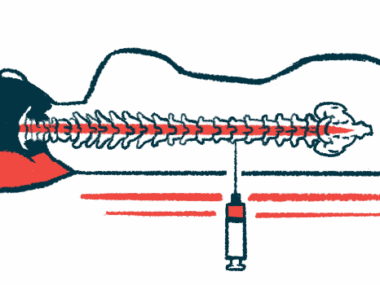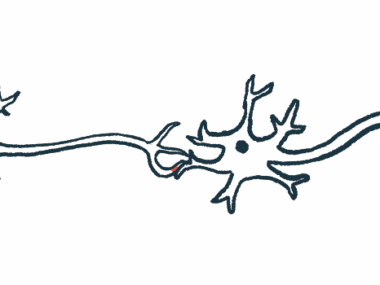Muscle Twitches Detected by Ultrasound May Aid Late Diagnosis
Written by |

Muscle fasciculations, or twitches, in adolescents and adults with later onset forms of spinal muscle atrophy (SMA) were detected best with a muscle ultrasound, a study concluded.
Muscle ultrasound combined with a physical examination is useful for screening adolescents and adults with weakness in muscles closest to the center of the body (proximal) to support a diagnosis of SMA, the scientists recommended.
The study, “Accuracy of Muscle Fasciculations for the Diagnosis of Later-Onset Spinal Muscle Atrophy,” was published in Neuromuscular Disorders.
In SMA, genetic defects cause the progressive loss of motor neurons, the specialized nerve cells that control voluntary movements, leading to muscle weakness and atrophy (shrinkage), among other symptoms. There are different types of SMA based on the age at symptom onset and their severity.
Diagnosis of more severe, early onset forms that appear in infancy can be more straightforward compared to later-onset forms in older children, adolescents, and adults where muscle weakness may be milder.
Muscle fasciculations are non-painful, rapid, involuntary, and random muscle contractions common in those with SMA. They can be identified through physical examination, electrical studies of muscles (electromyography), or muscle ultrasound. Whether the occurrence of muscle fasciculations can help diagnose later-onset SMA is unknown, however.
Researchers at the Universidade Federal do Rio Grande do Sul, Brazil recruited 19 people who showed symmetrical weakness in the proximal muscles, those closest to the center of the body — such as those of the shoulder, pelvis, and upper arms and legs — starting at 6 months of age.
Among them, 10 were diagnosed with SMA (median age, 23) of whom eight (80%) were male. Four of them had SMA type 2 and six had SMA type 3.
The study also enrolled nine people with different muscle disorders also caused by genetic defects (gMD), including limb-girdle muscular dystrophy, affecting the shoulder and hip muscles, and nemaline myopathy, mainly affecting the face, neck, and limbs. This group had a median age of 32, of whom seven (77.7%) were male.
Participants underwent a physical examination, electromyography (EMG), and muscle ultrasound, which focused on detecting fasciculations in the muscles of the upper arm (bicep), hand, upper and lower leg, back, and tongue.
Based on the examination, the inter-rater reliability — the extent to which two or more examiners agree — was poor for the total number of muscles with fasciculation and moderate for the classification of fasciculation.
Here, twitches were found in nine (90%) SMA patients and two from the gMD group (22.2%), a statistically significant difference. The ability of physical examination to detect twitches was 90% (sensitivity), and to rule out fasciculations (specificity) was 78%.
The ability to detect twitches using muscle ultrasound was considered good to excellent for the total number of muscles involved and for the classification of fasciculation. All those with SMA and three gMD patients were found to fasciculate, resulting in a sensitivity of 100% and a specificity of 67%.
Ultrasound detected twitches in four different muscle groups in only one of the gMD patients.
Among those with available EMG data, four out of five in the SMA group, and none of the six gMD patients tested had fasciculations in the same muscles examined with ultrasound. Here, the resulting sensitivity was 80%, and specificity 100%.
All SMA participants and five out of nine in the gMD group were found to twitch on at least one of the diagnostic methods. Combined methods generated a sensitivity of 100% and a specificity of 44%.
The accuracy of detecting twitching by the different methods was calculated to give an area under the curve (AUC) value, in which 0.7 to 0.8 is acceptable, 0.8 to 0.9 is excellent, and more than 0.9 is considered outstanding.
The AUC for combining a physical examination with a muscle ultrasound was the highest at 95.6%. For ultrasound alone, the AUC was 94.4%, while for the physical examination alone, the AUC was 83.9%. The AUC for EMG was 90%, but due to the small sample size, it was not included in a combined analysis, the researchers noted.
“The present study established the diagnostic properties of fasciculation detection for the diagnosis of SMA, depicting that [muscle ultrasound] presents the best accuracy,” the researchers wrote. “Physical examination and [muscle ultrasound] combined seem to be a good strategy for screening adolescents and adults with proximal muscular weakness for the diagnosis of SMA.”
“These results might improve diagnostic guidelines for later onset SMA, leading to earlier diagnosis, treatment and specific care,” the researchers said.







